The Connectome Illuminator started as a brain storming session between myself and Ting Xu, a neuroscientist at the Child Mind Institute where I work on wearable devices and sensors. We both love making art and wanted to come up with some kind of art project that would combine neuroscience and electronics - thus began Connectome Illuminator. A brain connectome is a comprehensive map of neural pathways in the brain, typically represented as a 3D model. Think of it as a brain schematic (or at least wiring diagram). They look super, super cool - you can learn more about them at the Human Connectome Project.
This is a brief video just to give you a better feel for the final product. Video and images really can't do justice though, it is stunning in person.
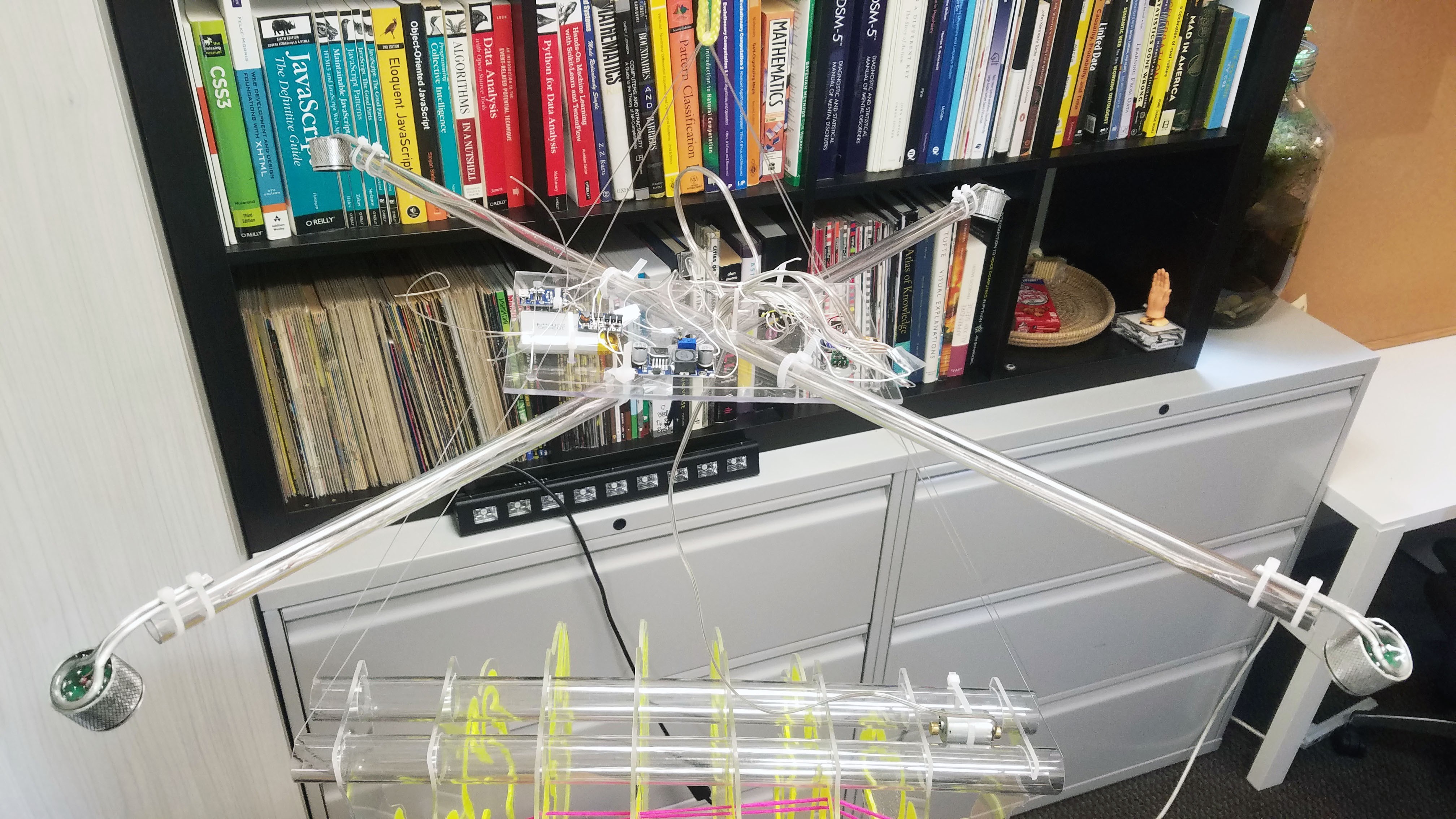
This is the ultraviolet lighting and electronics canopy that hovers about 15 inches (adjustable) above the brain/connectome model. Everything is zip-tied together with an eye towards rapid disassembly and reassembly for transportation.
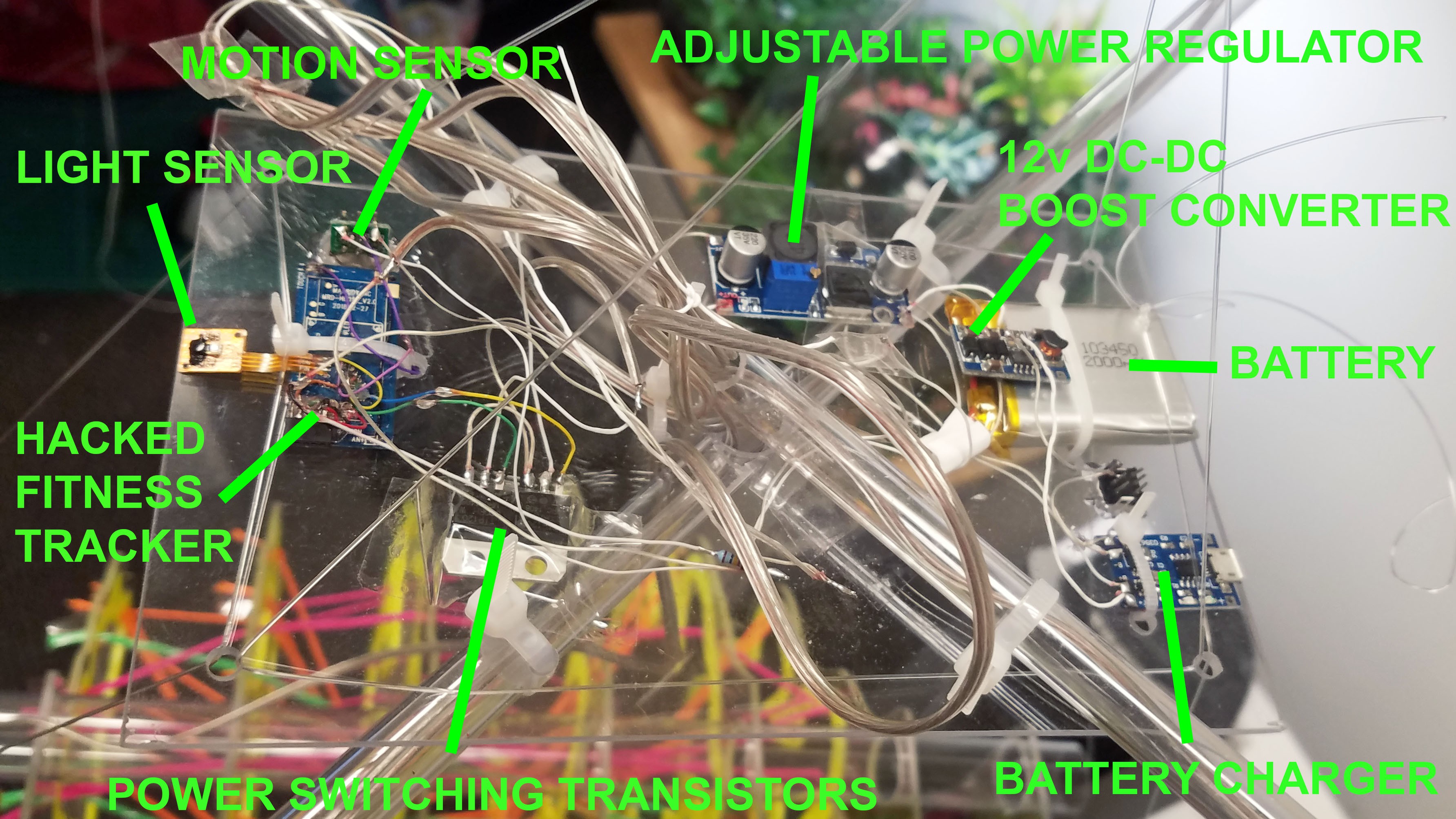
All the electronics are loaded onto a little piece of clear polycarbonate. I tried to keep everything as transparent and unobtrusive as possible to avoid distracting from the brain and connectome. The whole thing is powered by a 2000mAh Lithium Polymer battery, though it can also be powered over the USB battery charger for more permanent installations. This was all using spare parts, hence the 12 volt DC-DC boost converter.
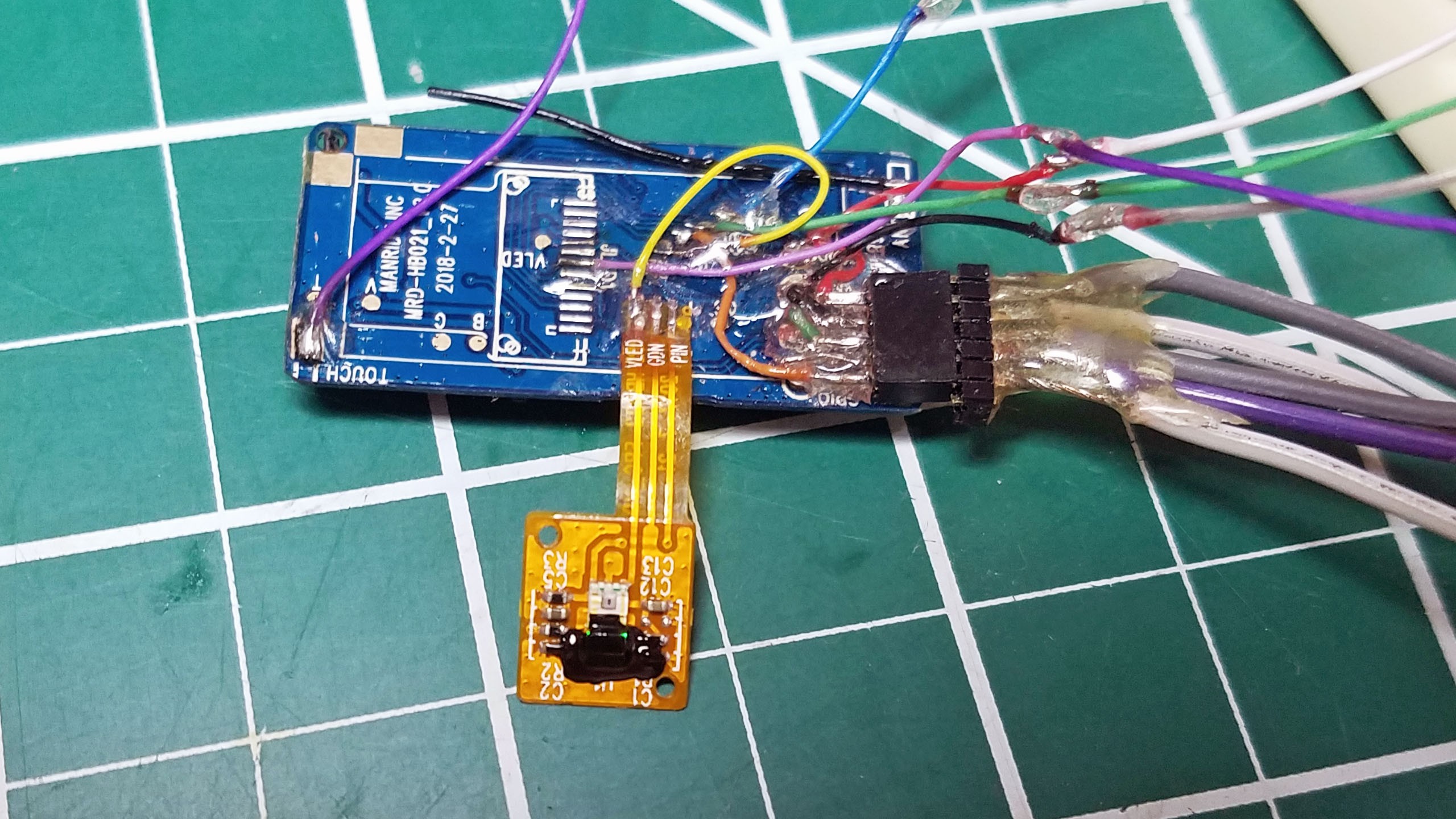
The electronics are controlled by a hacked fitness tracker containing a Nordic nRF52832 ARM Cortex M4 microcontroller. This was more a matter of convenience than anything else, I salvaged the parts from a broken Tingle gesture recognition device prototype. The PPG heart rate sensor on this hacked fitness tracker is super simple; just a green LED and photo-diode. I covered the heart rate sensor LED with a blob of black paint (you can faintly see the green LED light through the paint above) and then used the heart rate sensor photo-diode to make the Connectome Illuminator light responsive: the ultraviolet LED arrays and vibration motor start when the lights are turned out (light received by the photo-diode dips below a set threshold). The microcontroller I'm using support Bluetooth BLE so I might create a mobile app for it in the future.
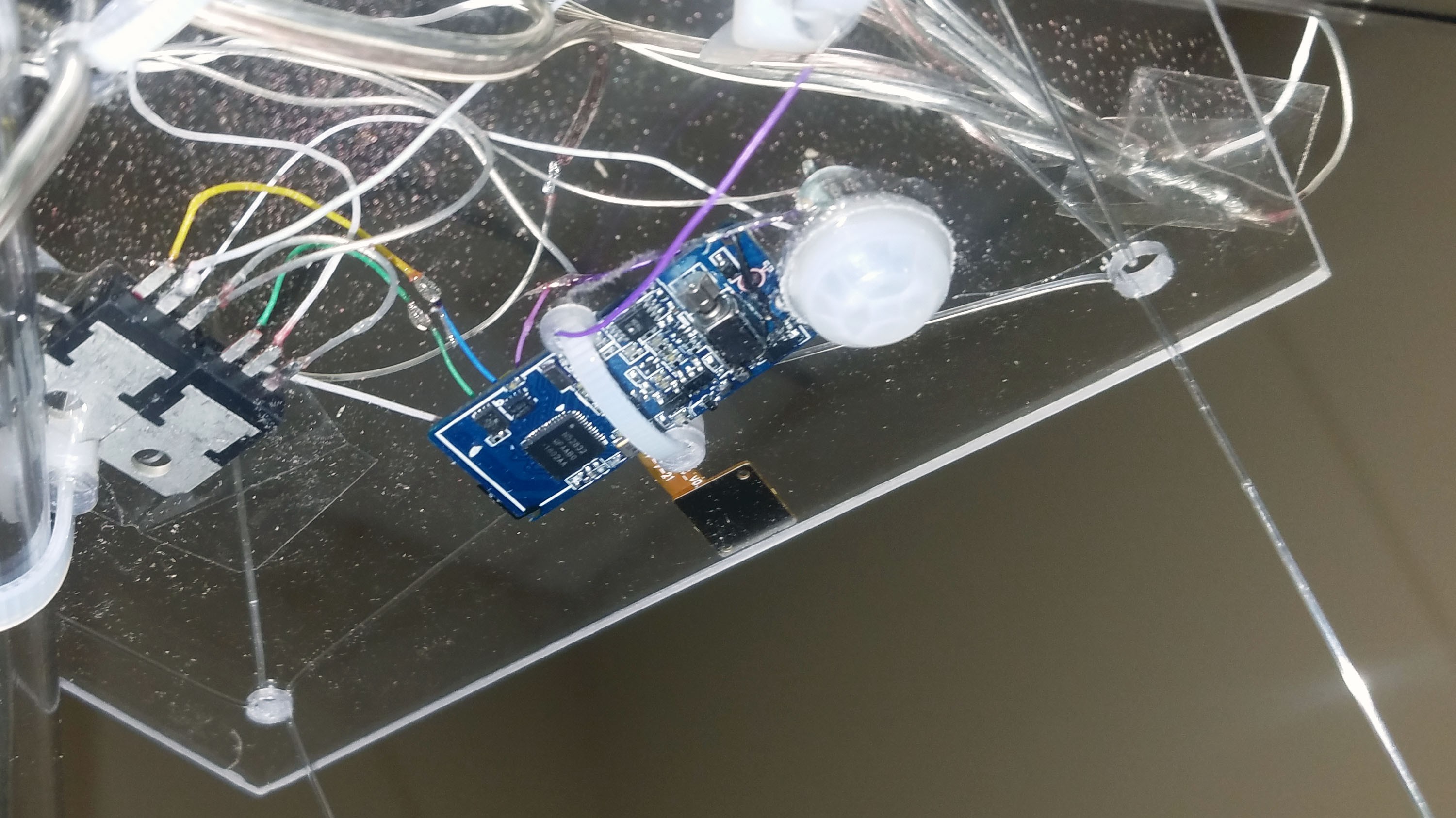
A simple thermal motion sensor (thermopile + fresnel lens array) is mounted through a hole in the polycarbonate electronics platform. The field of view is limited by the fact that it is pointed directly towards the floor. This gives it a range of about 8 feet.
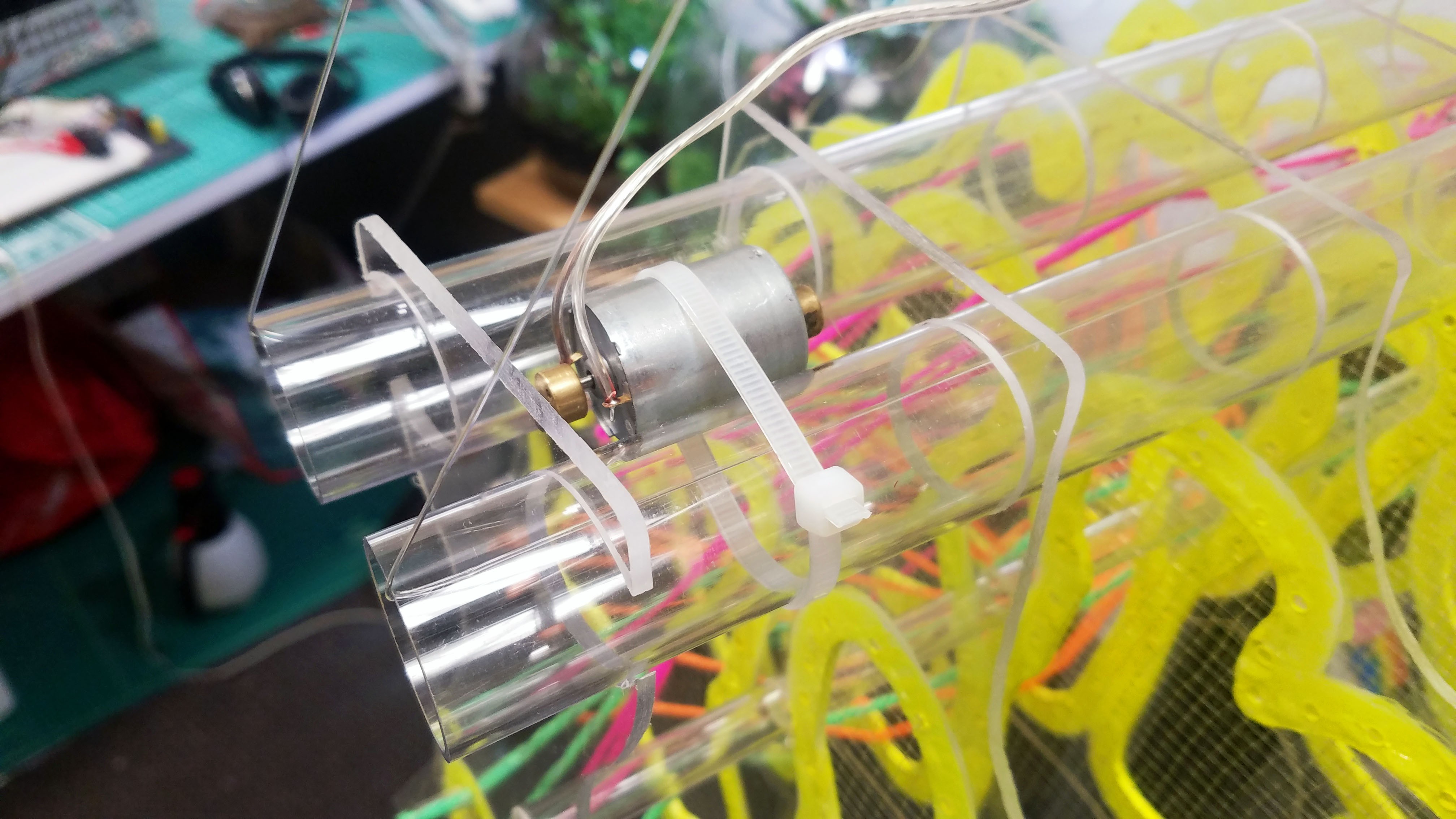
A relatively large vibration motor is attached to the connecting polycarbonate tube. Because all the ultraviolet light comes from a single direction, the vibration causes the fluorescent yarn to shimmer as if it were alive.
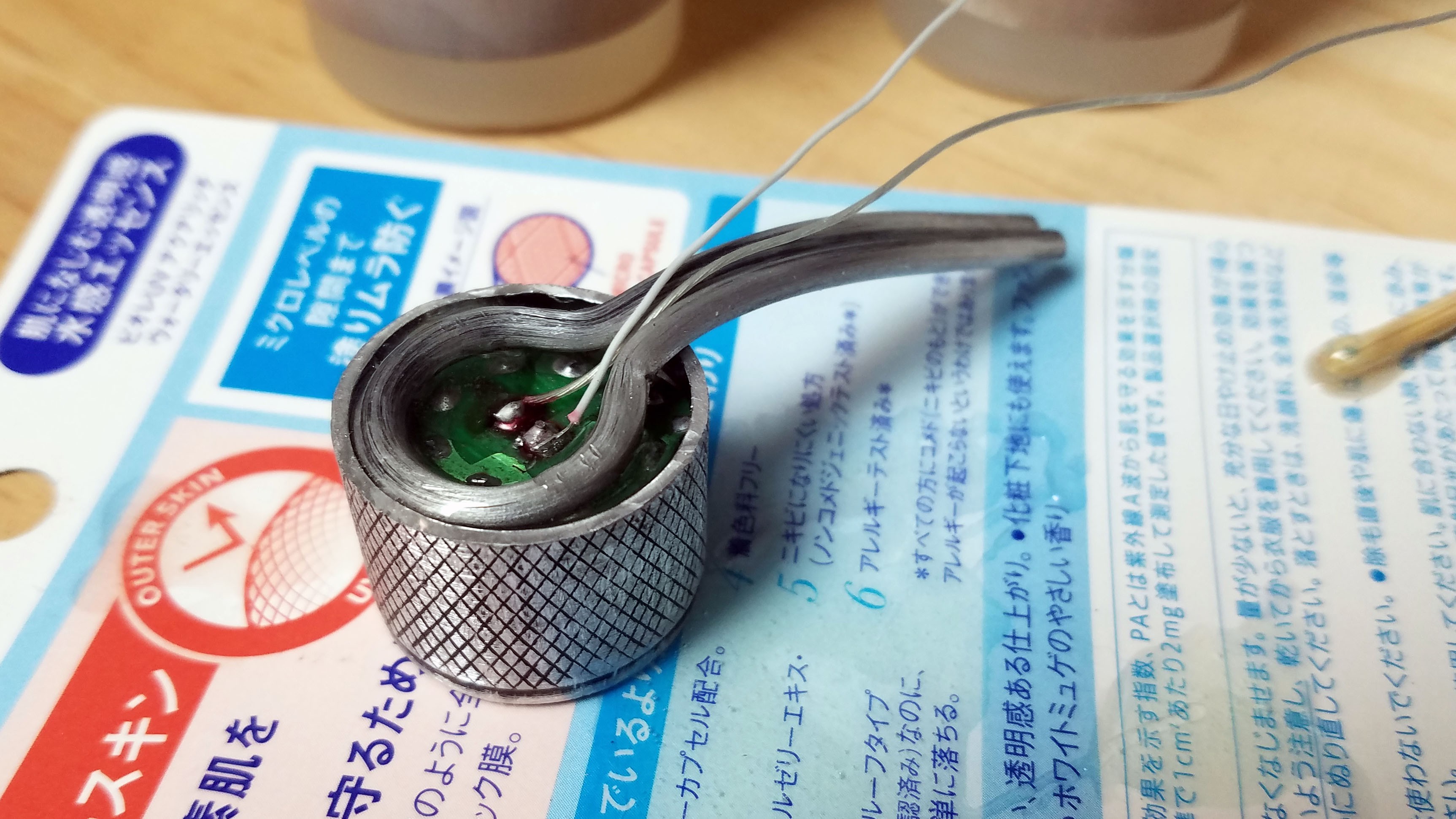
This is what the black light flashlights looked like when I was done with them. I cut off the LED containing portion and epoxied a section of aluminum bonsai training wire. The bonsai training wire is zip-tied to the polycarbonate tube canopy struts. The bonsai wire can easily be twisted to...
Read more » Curt White
Curt White
Absolutely stunning!